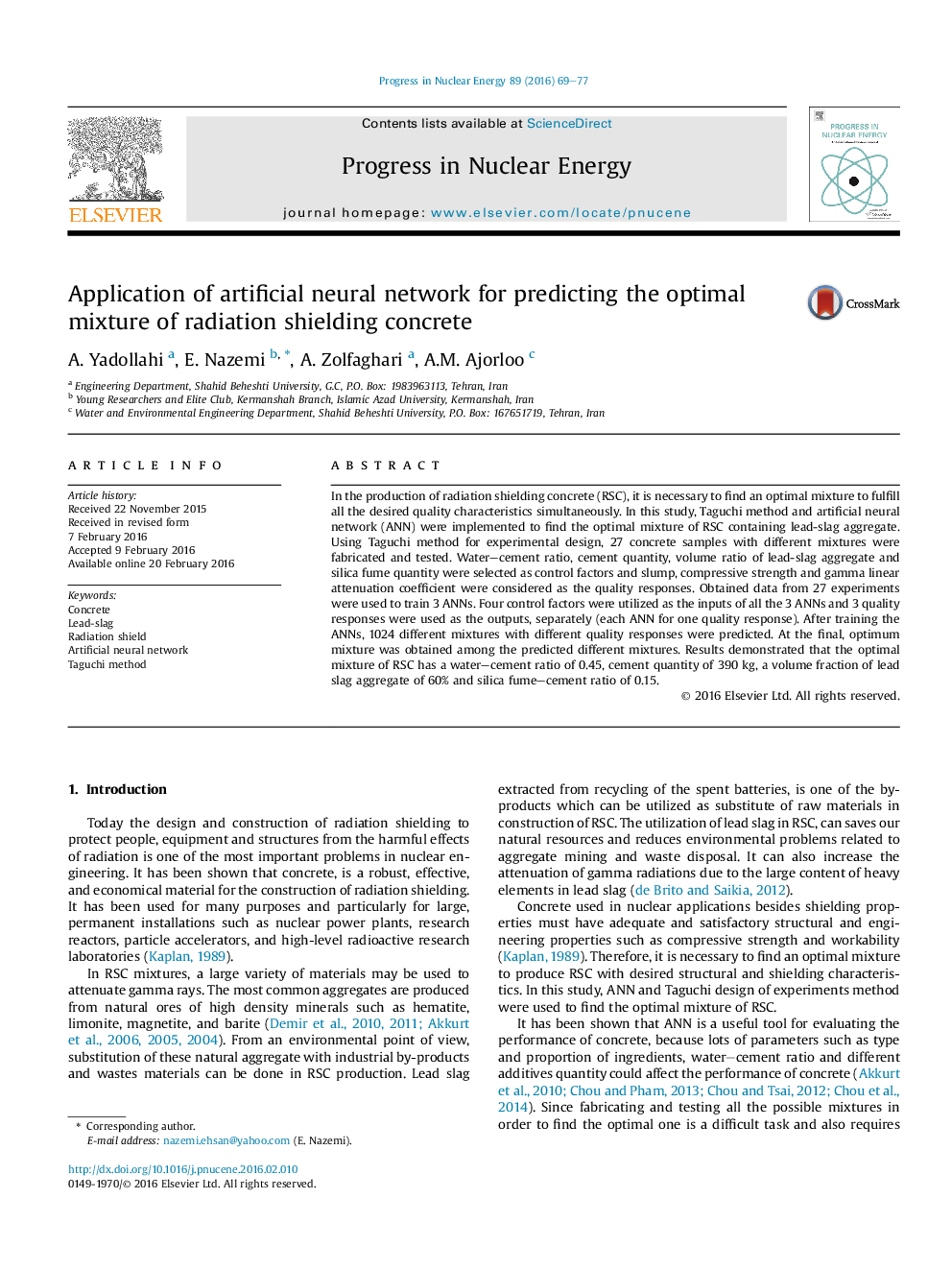| کد مقاله | کد نشریه | سال انتشار | مقاله انگلیسی | نسخه تمام متن |
|---|---|---|---|---|
| 1740296 | 1521749 | 2016 | 9 صفحه PDF | دانلود رایگان |
• Lead slag (waste material) was used in fabricating of shield concrete.
• The Taguchi method was implemented to obtain the data set required for training the ANN.
• Trained ANN predicted quality characteristics of radiation shielding concrete.
In the production of radiation shielding concrete (RSC), it is necessary to find an optimal mixture to fulfill all the desired quality characteristics simultaneously. In this study, Taguchi method and artificial neural network (ANN) were implemented to find the optimal mixture of RSC containing lead-slag aggregate. Using Taguchi method for experimental design, 27 concrete samples with different mixtures were fabricated and tested. Water–cement ratio, cement quantity, volume ratio of lead-slag aggregate and silica fume quantity were selected as control factors and slump, compressive strength and gamma linear attenuation coefficient were considered as the quality responses. Obtained data from 27 experiments were used to train 3 ANNs. Four control factors were utilized as the inputs of all the 3 ANNs and 3 quality responses were used as the outputs, separately (each ANN for one quality response). After training the ANNs, 1024 different mixtures with different quality responses were predicted. At the final, optimum mixture was obtained among the predicted different mixtures. Results demonstrated that the optimal mixture of RSC has a water–cement ratio of 0.45, cement quantity of 390 kg, a volume fraction of lead slag aggregate of 60% and silica fume–cement ratio of 0.15.
Journal: Progress in Nuclear Energy - Volume 89, May 2016, Pages 69–77
